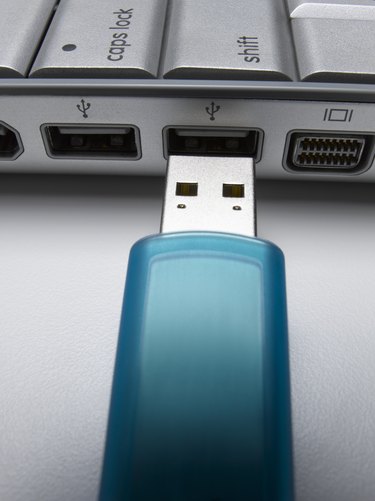
When your computer stops running correctly, resetting the system to its default configuration will often solve the problem, but most methods will also erase your files. Microsoft introduced the refresh feature in Windows 8 to clean your system without losing your work. If you're using an older operating system, or if you need to completely wipe your drive, you can back up your files locally or online, reinstall the operating system and then move your documents back to the computer.
Refresh
Video of the Day
The refresh feature in Windows 8 reinstalls Windows without affecting your files, such as Word documents or pictures. To use it, click "Settings" in the Charms bar, and then click "Change PC settings" and open the "General" tab. Click "Get started" under the Refresh section to begin the process. After the system reinstalls, the computer will boot using Windows' default settings, but your files will remain in their original locations.
Video of the Day
Manual Backup
If you need to completely erase your drive but want to retain your documents, you can copy them onto another drive. Depending on how many files you need to save, you may be able to fit them all onto a USB drive or a few CD-Rs. If you need a large amount of space, you can attach an external hard drive. If your computer won't boot, you or a tech professional can remove the computer's hard drive and attach it to another computer to copy off the files. Afterward, insert your system disc to begin the reinstallation. In Windows 8, you can also use the reset feature, found directly below the refresh option. After you reinstall the system, reattach the external drive or insert your burned CDs and copy your files back to their original locations.
Cloud Backup
Several online services, such as Dropbox, Box and Google Drive support backing up your documents, removing the need to make a manual backup before a system wipe. You can upload documents through the service's website or, with some cloud storage providers and subscription plans, use a syncing program to automatically back up files as you use them. After your reformat, reinstall the syncing program or use the website to download all your files onto the clean computer.
Programs
Regardless of what method you use, your programs will require reinstallation after you reinstall the OS, even with a Windows 8 refresh. Because most computer programs write information to the system registry, simply copying the program files onto your backup drive and replacing them later won't work. You'll need to go through the original installation process to replace your software.
Warnings
Information in this article applies to Windows 8. It may vary slightly or significantly with other versions. If you need to clean your computer due to a virus, note that file backups may carry the virus, so run an anti-virus scan on your backup drive before moving files to the clean system.